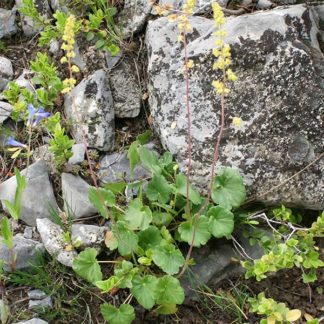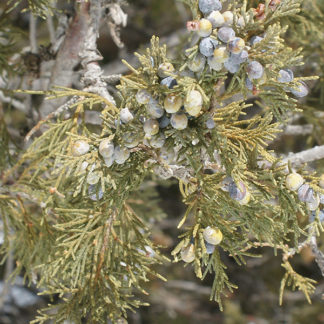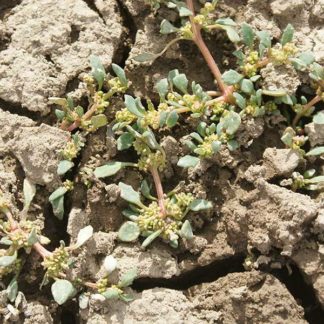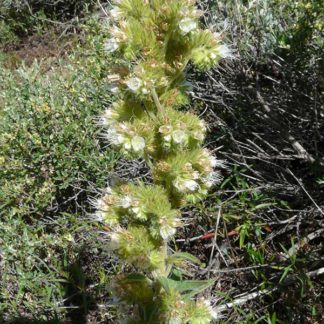exposed
Showing 37–48 of 60 results
-

Huechera cylindrica / coral bells
- oval-shaped leaves growing in clumps/tufts - all basal
- leaf edges with small lobes or teeth
- teeny pale yellow, creamy, green or pink flowers on a leafless stem
- flowers more dense at top of spike than lower down
- in woods, on cliff-side ledges, rocky slopes and subalpine meadows
-

Juniperus scopulorum / Rocky Mountain juniper
- small, rounded evergreen tree (or shrub)
- fibrous, red to grey, shredded bark
- pollen and seed cones at branch tips on separate plants
- female cones blue berries with a waxy, whitish bloom
- leaves on mature plants scale-like
- leaves on young plants are prickly, needle-like
-

Lithospermum ruderale / Columbia puccoon
- small, pale yellow flowers in early spring
- flowers in dense clusters, nestled among the leaves
- 1–3 in. long, linear leaves, notably crowded on upper part of stems
- in dry areas, especially with sagebrush
-

Lomatium dissectum / fernleaf biscuitroot
- blooms soon after snowmelt
- yellow or purple-ish flowers in compound umbels
- highly divided, fern-like leaves
- rocks, rocky soils, sagebrush communities
-

Lotus corniculatus / birds-foot trefoil
- roadsides and other disturbed areas
- numerous bright yellow, pea-like flowers
- three, oval and pointed leaflets
- seed pods are arranged like toes on a bird's foot
-

Oxybasis glauca / oak-leaved goosefoot
- typically prostrate and small, apart from other plants
- mudflats and other drying wet areas
- small, blue-green, small-lobed leaves; often w/ reddish stems
- teeny clusters of teeny yellow flowers
- leaves feel cool and damp due to glandular hairs on lower surface
-

Oxytropis sericea / white-point vetch
- white "pea" flowers in clusters of up to 25
- banner petal white with purple/blue veins
- hairy, pinnately compound leaves, all basal
- disturbed areas, especially exposed to cold, drought, high light etc.
- pretty, but toxic to grazing animals
-

Packera multilobata / lobeleaf groundsel
- deeply lobed leaves, mostly at the base of the plant
- bright yellow daisy-like flowers, 10-30 in a cluster per plant
- orange-yellow disk florets
- woodlands, foothills, and generally dry/ sandy/ rocky places.
-

Pedicularis contorta / curved-beak lousewort
- alpine and subalpine habitats
- fern-like leaves at base
- tall, spikey inflorescence
- white flowers with coiled upper beak and flat, 3-lobed lower lip
-

Phacelia heterophylla / varied leaf scorpionweed
- spirally arranged, teeny white flowers with very long stamens
- flowers turn brown soon after opening
- all parts of the plant are hairy
- not all that common, but widespread
-

Phacelia sericea / silky phacelia
- deep purple flowers with really long stamens and orange anthers
- many flowers arranged in a tight coil up to 2 feet long
- silky, divided (fern-like) leaves
- exposed, higher altitude, rocky places; often with sagebrush
-

Phlox diffusa / spreading phlox
- low, spreading, moss-like (before blooming)
- flowers 5-petaled, a variety of colors, and with a tube below the petals
- many habitat types incl. mountain slopes, rocky terrain, dry forests or with sagebrush
- blooms in early spring to early summer
- confusable with P. hoodii
Showing 37–48 of 60 results